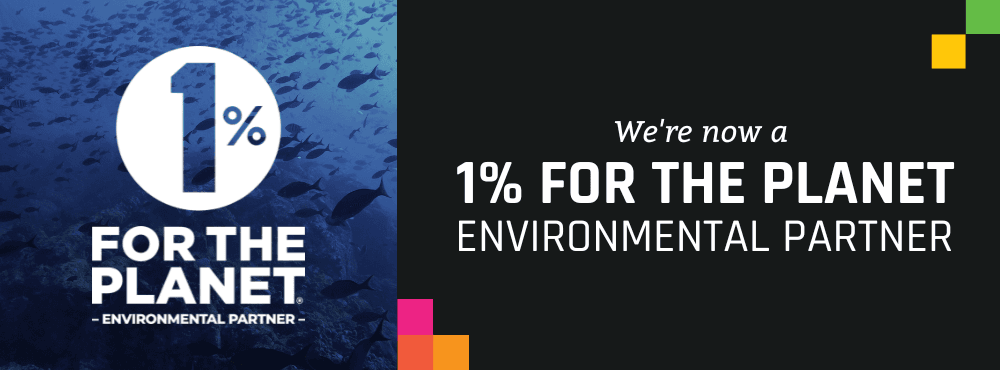
Squarespace vs. WordPress: We Think the Winner is Clear
Your website is your home base. It's where people can learn about your organization, your work, and how they can support you. But you probably don’t spend much time wondering whether or not you should have a website. What you might be wondering, though, is which platform to choose for building or moving your site to ensure the best experience for both you and the visitors of your website.
![[Blog] AAA](/_next/image?url=https%3A%2F%2Fimages.ctfassets.net%2Fa0em3uo7cuue%2FHzDhDCuAvkSGz58KpOP47%2Fca22ca2fba0c8d07743efe9cf407a9b3%2Faaa.png&w=3840&q=75)
There are two platforms that come up in these conversations most often, which are WordPress and Squarespace.
If you're at a crossroads and unsure which platform to pick, you're not alone. This is a common question we receive, and we get it. Technology is always changing, and it can be hard to keep up! This can become especially hard if you’re at a limited capacity—no matter the resource (and hey, time is a resource too, not just money!).
So, let’s review the two platforms and see why one often comes out ahead of the other.
WordPress: A strong platform with a lot of complexity.
If you were to ask us about WordPress, we’d say it likely stands out in two categories:
1. As one of the most widely used website builders in our movement. 2. As one of the most challenging platforms to manage.
While it’s true that WordPress can be powerful, it requires more hands-on management and technical knowledge compared to some other platforms.
Here are 5 things to note about WordPress:
1. Design Capabilities
Pro: It offers more customization.
WordPress has been around for over 20 years, making it one of the most established website platforms available. Over these years, it has built a massive library of themes—with over 10,000 free and premium themes available—catering to virtually any design preference or website need you might have. This extensive selection allows you to easily find and customize a theme that fits your brand, whether you’re looking for something simple or highly specialized.
Con: Advanced customizations might require technical skills, making it harder for beginners.
While many of these themes offer user-friendly options, such as drag-and-drop functionality, more advanced customizations—like integrating specific plugins or creating custom layouts—may require coding knowledge or the help of a developer. Some themes, despite being marketed as customizable, might not offer the deep level of personalization you’re looking for without modifying the code. This can be a limitation if you lack technical skills, and you might find yourself restricted by the preset options provided by the theme.
![[Blog] WP Design Capabilities](/_next/image?url=https%3A%2F%2Fimages.ctfassets.net%2Fa0em3uo7cuue%2F5Ot9GDcOTtUK0lKIKspQsx%2F418fdb74ee62ea206257cd6d27f816ce%2FScreen_774x800.jpg&w=1920&q=75)
2. Functionalities and Maintenance
Pro: It’s highly adaptable because of its extensive plugins, and it gives you full control (if that’s your kind of thing).
Most WordPress sites rely on plugins to expand and customize their functionality. With thousands of plugins available, you can tailor your site to meet specific needs without extensive coding. Plugins allow you to incorporate specialized features that might not be available on other platforms, such as advanced donation systems, membership management, or complex event calendars, all tailored to your nonprofit’s specific requirements. This flexibility allows you to build a site that truly fits your needs.
Additionally, with WordPress, you have complete ownership of your website, including your data and content, and you’re not locked into a proprietary platform. You’re in full control over when and how updates are applied, giving you the autonomy to manage every aspect of your site as you see fit. However, we don’t see this as a true “pro” unless you thrive in this sort of autonomy.
Con: It’s quite dependent on plugins, and requires ongoing maintenance.
It’s common for even the simplest WordPress sites to use several plugins to manage essential functions like SEO, security, and performance optimization. However, plugins are developed by different creators, and not all of them work well together. Conflicts between plugins can cause features to break or even bring your site down, especially if they are not regularly updated or tested together. Since plugins are developed by third parties, they can sometimes introduce security vulnerabilities if they are poorly coded or not kept up to date. Furthermore, installing too many plugins, or using poorly optimized ones, can slow down your website’s performance.
WordPress itself requires regular updates for core, themes, and plugins to ensure security and functionality. As you’re in full control, you’re also responsible for managing your hosting, backups, and security measures. Without diligent maintenance, your site could face technical issues, slowdowns, or even security breaches, making WordPress more complex to manage, especially if you’re not technically inclined.
![[Blog] WP Functionalities and Maintenance](/_next/image?url=https%3A%2F%2Fimages.ctfassets.net%2Fa0em3uo7cuue%2F64teF6SQlnbZQHvW32l1Jl%2Fd4e28d8a69b705af0bbc7fae9332578f%2FScreen_800x593.jpg&w=1920&q=75)
3. Ease of Use
Pro: Because it’s open source, you can find many resources online.
WordPress has a large and active global community, providing a wealth of resources such as tutorials, forums, and documentation. Many of the resources for learning and using WordPress are freely available, whether you’re searching through forums, watching YouTube tutorials, or reading guides on popular blogs.
Con: Its learning curve is pretty steep.
While every web platform has some kind of learning curve, WordPress’s learning curve can be pretty daunting if you aren’t technically inclined. Due to its extensive customization options and the need to manage plugins, themes, and updates, this complexity often requires a steeper learning curve or the need to hire technical help. Since WordPress is open source, this also means there’s no dedicated customer support.
4. Scalability
Pro: It can grow with your organization.
WordPress is highly scalable, making it ideal for your nonprofit if you plan to expand your online presence. You can start with a basic site and later grow it into a more complex platform, adding new functionalities through plugins.
![[Blog] WP Scalability](/_next/image?url=https%3A%2F%2Fimages.ctfassets.net%2Fa0em3uo7cuue%2F2o2hTtIeJZFOF1ayanheVb%2F3e9ac87e85f6f181514734b024e9484c%2FScreen_800x533__1_.jpg&w=1920&q=75)
Con: Its growth can increase its complexity.
As you add more features, managing your site can become more complex. You might need to implement advanced security measures, on top of regular maintenance, including updates, backups, and performance optimization, which can demand more time and resources.
5. Costs
Pro: You can start with a low-cost setup.
WordPress allows you to start with a low-cost setup if you choose basic hosting and free themes or plugins. You have the flexibility to scale costs according to your needs, and there’s no mandatory subscription, so you only pay for what you use.
Con: Costs can add up quickly.
Costs can quickly add up with plugins, hosting, and premium themes, especially as your site grows or if you need professional help. The need for ongoing maintenance and security measures can also lead to unexpected expenses.
Based on these reasons above (and even more so, on the reasons we’re about to discuss), we almost always recommend Squarespace over WordPress—or other platforms. Read below to see why!
![[Blog] FarmKind](/_next/image?url=https%3A%2F%2Fimages.ctfassets.net%2Fa0em3uo7cuue%2F4kXmUx9KLBTFVu4G5sVk6K%2F3eef3cf7d9bb6d5b4807acd101674c56%2Ffarmkind.png&w=3840&q=75)
Squarespace: Best positioned to meet the needs of a nonprofit looking for a straightforward and secure option.
Squarespace is the platform we recommend to other nonprofits for a multitude of reasons, main of them being that it provides a dynamic, easy-to-use interface at a low cost. While this may change as technology evolves, what Squarespace currently has to offer is especially great for organizations with limited resources.
Here’s an overview of what Squarespace has to offer in terms of these 5 things:
1. Ease of Use
Pro: It’s beginner-friendly, and it doesn’t leave you stranded.
Squarespace’s web editor is easy to use, even for beginners. Editing pages, adding text or images can be as simple as editing a PowerPoint presentation or a Google Doc. It requires no special skills, meaning you don’t need to know how to code to make a fantastic website. Since you won’t need to hire a developer to get you on your way, this drastically simplifies the process while reducing cost at the same time. Squarespace also handles the hosting, meaning no patches, technical updates, configuration, or downtime. It also offers 24/7 customer support via live chat and email, a comprehensive help center, and a helpful forum.
![[Blog] SS Ease of Use](/_next/image?url=https%3A%2F%2Fimages.ctfassets.net%2Fa0em3uo7cuue%2F28zks3r8ek7sFcDwLbftNl%2F44a411ae1842a7dc70d25dbba84ce9e0%2FScreen_800x532.webp&w=1920&q=75)
Con: It’s straightforward but less flexible.
While easy to use, Squarespace’s simplicity means it has less flexibility for advanced customizations compared to platforms like WordPress, limiting what you can do without custom code.
2. Design Capabilities
Pro: It offers a range of professional templates and the option to customize.
Squarespace provides a wide selection of high-quality, professional templates that make it easy to create a polished and visually appealing website right from the start. These templates are designed to look great with minimal effort. Due to the strong variety of templates, you’ll be sure to find something close to what you’re looking for, and it’ll be easy to get started on the right foot. All you have to do is update the built-in settings to update the colors, fonts, and branding, and then paste in all of your content, and you’re good to go. If you have a bit of technical ability, or are the kind of person who’s eager to learn and tinker with things, it’s also possible to further customize your site with some simple CSS!
An amazing thing about Squarespace is that its designs are mobile-responsive, automatically adjusting to look good on mobile devices, meaning you design once for both web and mobile. You can also tailor the mobile experience to ensure it’s gorgeous (around 55% of web traffic comes from mobile).
Con: Because it’s so popular, you need to put in some effort to stand out.
Since Squarespace templates are so easy to use, it makes them very popular. This can cause a lot of sites on the internet to look similar, if no effort is made to differentiate the design—so it’s important to put forth at least a minor effort to change things up, whether that’s the built-in settings or custom code. More advanced customizations and functionalities are possible, but require more technical expertise to implement, rather than installing a premade plugin.
![[Blog] SS Design Capabilities](/_next/image?url=https%3A%2F%2Fimages.ctfassets.net%2Fa0em3uo7cuue%2F3vacJjbd4tiwAc65TZLoz9%2F3445b2a41226cccf67f0ab6a53bc3b07%2FS_800x533__1_.jpg&w=1920&q=75)
3. Functionalities and Maintenance
Pro: It’s an all-in-one platform, which makes it lower maintenance.
Squarespace includes integrated hosting, blogging tools, security, and regular updates, all managed by the platform. All security requirements are taken care of directly by Squarespace without any action on your part—neither when building your website nor when maintaining it in the future.
Additionally, your website benefits from regular security updates and maintenance, all out of the box from Squarespace without requiring a single click from you.
![[Blog] SS Functionalities and Maintenance](/_next/image?url=https%3A%2F%2Fimages.ctfassets.net%2Fa0em3uo7cuue%2Fqh3aldnr8GtSzSkPcvGXD%2F7fbc0d8c437689eb2a87d3f969fcbd20%2FScreen_800x559.webp&w=1920&q=75)
Con: Without custom code, you’re limited to built-in features.
While the built-in features are robust, you’re limited to what Squarespace offers, with fewer third-party integrations and less flexibility to add new functionalities compared to WordPress.
4. Scalability
Pro: It allows your site to grow as your organization grows, too.
Squarespace is flexible enough to allow you to start with a very small, simple landing page in the early days of your organization. As you grow and need more pages and features, you can easily add them without having to understand complex plugins or hire a developer. This makes Squarespace particularly well-suited for organizations that are looking for a straightforward, scalable solution.
Con: It may be more suitable for small to medium organizations.
As your organization grows and your site’s needs become more complex, Squarespace’s limited flexibility might make it less ideal for larger organizations with advanced requirements.
5. Costs
Pro: It offers a predictable, all-inclusive pricing structure.
Squarespace offers a predictable, all-inclusive pricing structure that covers hosting, themes, and most features, making it easy to budget with no hidden costs. The simplicity of a single subscription means you know exactly what you’re paying for each month.
Con: It can be more expensive compared to a basic WordPress setup (but it doesn’t include all the additional costs that can arise with WordPress).
Although there is a cost associated with Squarespace, it is a small price to pay for all of the above features and a worry-free website. The significant time/stress cost of a “free” website is often higher. As of August 2024, this is around $170 per year, which pales in comparison to the ongoing cost of contract web developers.
![[Blog] Dao Foods](/_next/image?url=https%3A%2F%2Fimages.ctfassets.net%2Fa0em3uo7cuue%2F3O6V3ovQMKYq0uxyucvryX%2F2e6bb814556906d477e21040a3df1504%2Fdaofoods.png&w=3840&q=75)
And if you’re interested in other platforms before finalizing your decision…
A few notes about Wix:
The 3rd most common web platform we’re asked about is Wix. While Wix is similar to Squarespace with its drag-and-drop editor and similar abilities, we have noticed issues with its mobile responsiveness, design inconsistencies, and slow loading times. It is comparable to Squarespace in a lot of ways, however, we see it as a potential step down from what Squarespace can offer. Both platforms support e-commerce, but Squarespace's built-in tools are generally more streamlined.
Overview of other options:
There are seemingly endless other options, including Weebly, WebFlow, Shopify, Joomla, Drupal, and more… We can go into more detail with those, but for the purposes of this post, we will summarize briefly:
Ease of use: Squarespace, Wix, Weebly, and HubSpot CMS are user-friendly with simple interfaces.
Design and templates: Squarespace is known for stylish, polished templates. Wix offers more variety, and Webflow provides powerful design tools.
Customization: Platforms like WordPress, Joomla, Drupal, and Webflow offer more customization but require more technical knowledge.
E-commerce: Shopify and Magento are more advanced for e-commerce, while Squarespace, Wix, and Weebly offer solid but simpler e-commerce solutions.
SEO and marketing: Squarespace offers good built-in SEO tools, but HubSpot CMS excels with advanced marketing integrations.
Community and support: WordPress, Joomla, and Drupal have large communities, while Squarespace and Shopify provide strong customer support.
![[Blog] Overview of other options](/_next/image?url=https%3A%2F%2Fimages.ctfassets.net%2Fa0em3uo7cuue%2F4cJKZwJKQzXT9x6hYhhtFB%2F4862122fa5081dda02f63d2302df3297%2FScreen_800x533.jpg&w=1920&q=75)
Overall, we find that the majority of the organizations we work with don’t need more than what Squarespace can offer.
Of course, every organization has unique needs, and while Squarespace is powerful and user-friendly, it might not be the perfect fit for everyone—especially if you’re looking for extensive customization or specialized tools.
However, if you’re looking for a straightforward and reliable platform—as most people are—Squarespace stands out as a strong contender. Equally, the extra customization ability on other platforms can introduce unnecessary complexity and security risks, which may be more trouble than it’s worth.
Still unsure about which platform to choose or how to proceed? We’re here to help.
Let's chat about your needs and help you make the best decision for your organization.
This post was prepared in collaboration with our sister org Violet Studios, as our branding & design side of the house. All our services are provided at no cost to other animal advocates and organizations.
![[Blog] Violet Collab](/_next/image?url=https%3A%2F%2Fimages.ctfassets.net%2Fa0em3uo7cuue%2F3BiAQqbQHUIOK5SaLZpHXI%2Faeba6a77705fb85ab915698d47cc0665%2FS_800x532.jpg&w=1920&q=75)

We are a mission-driven tech organization focused on building data-driven, disruptive, and innovative projects to help see an end to animal exploitation.

We are a mission-driven tech organization focused on building data-driven, disruptive, and innovative projects to help see an end to animal exploitation.




